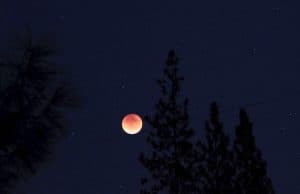As a child, I remember riding in the car at night and telling my dad to hurry up because we were racing, and the moon was going to get home before us. Now my 6-year-old plays hide and seek with the moon as we drive, telling me it's hiding behind this building or that tree.
We are both excited that this weekend will give us a chance to see the moon "hide" during the first total lunar eclipse of the year. An eclipse happens when the earth comes between the sun and the moon, and the moon is in the earth's shadow for a few hours. Check out some of these fun books about exploring the moon and stars in the night sky so you'll be ready for the eclipse, too.
Moon starts to feel left out because everyone stays up during the day to enjoy Sun but sleeps the whole time Moon is out. And one night she is just gone. In The Night the Moon Went Missing, everyone quickly realizes how much they need Moon and the search begins, but no one can find her... except one little girl. Can Lucy help Moon so she will shine proudly in the night sky again?
Rocket, a young, Black girl, uses her telescope every night and loves to share facts about space. When a meteor shower is expected, Rocket invites everyone in her family -- and the neighborhood -- to join her in skygazing. Everyone is always looking down at their phones but when Rocket Says Look Up!, they get to share an amazing experience.
As long as people have told stories, there have always been tales told about the moon. A recent addition that explains the phases of the moon is A Big Mooncake for Little Star. Little Star's mama bakes a big mooncake and leaves it to cool in the night sky. She tells Little Star to leave it alone, but Little Star just can't help but nibble on the tasty mooncake night after night. What will happen when all that is left behind is a trail of crumbs?
What other stories might you tell about why the moon doesn't look the same every night?



Add a comment to: Twinkle, Twinkle, Little Moon: Skygazing for Kids